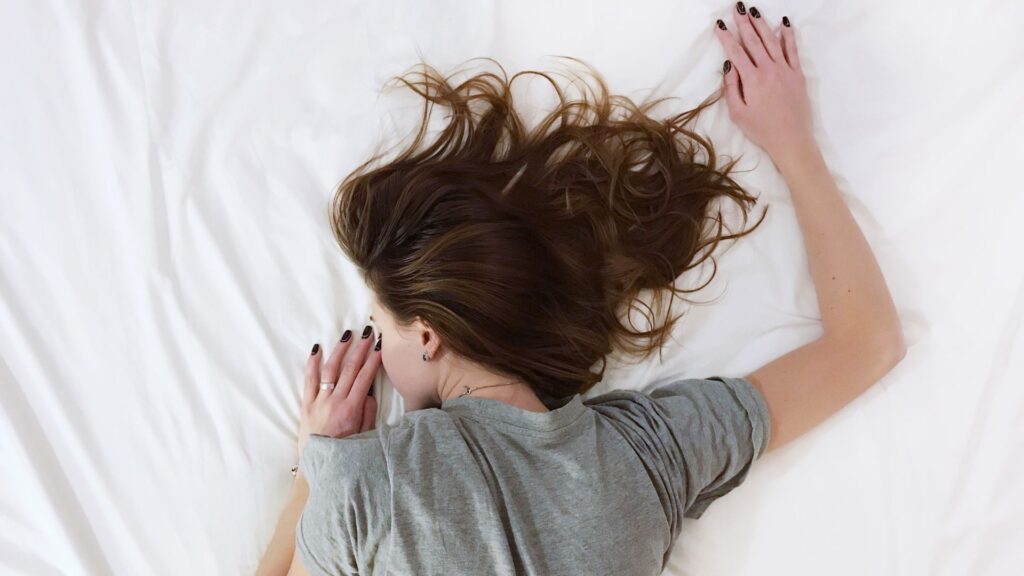
Let’s go back: the last time you bought a mattress (Varsity? Your first flat, ten years ago?), how long did you spend on it before making things official? Did you walk from bed to bed and lay there for a few seconds before hopping onto the next one? If you answered yes, we have some sobering news.
According to experts, you should spend 15 minutes on a prospective mattress before purchasing. Thankfully, there is now a faster, more efficient and scientific way to make sure you’re getting the right mattress for your body. It’s pressure mapping, and it takes just five minutes.
Why is the right mattress important?
Not to alarm you, but it’s sort of THE most important thing. A good night’s sleep starts with the right surface that supports your unique frame and sleeping position. When you’re in bed with a mattress that’s too firm or too soft, you won’t sleep as well. Plus, a bad night’s sleep consistently for weeks or months on end means far more than being cranky. Bad sleep affects your mental health, your mood, blood sugar regulation, weight and more. With a good mattress, you’re setting yourself up for better sleep quality, which impacts your health significantly.
READ MORE: Fall Asleep Faster With These 7 Hacks For Better Sleep
What is pressure mapping?
A computerised tool, pressure mapping software identifies how your weight is distributed across the mattress. The practice originated in healthcare to prevent pain and improve comfort among patients. Now, it’s gone mainstream.
At Bed King’s Comfort Solutions Lab, you can have your sleep position analysed. The pressure mapping tech, which has over 1600 built-in pressure sensors, targets the body’s pain points, creating the optimal sleep code that is then matched to three of twelve different mattresses. Each mattress, designed and manufactured locally by Bed King, complements each sleep code.
How pressure mapping matches you to an ideal mattress
“The more pressure you have, the more comfort you will need in a mattress to relieve those pressure points,” explains Carla Ewertse-Myburgh, Operations Executive at Bed King. “Comfort is not measured by how soft a mattress is but by how much pressure it’s able to relieve. And if there is not enough comfort, you’ll find yourself tossing and turning the whole night trying to find comfort. The other factor is support and this is provided by the pocket spring units found in our mattresses.”
Once you’ve laid on the pressure mapping tech (it takes about five minutes), the data is interpreted and will create a connection between Bed King’s offering and your sleep data. You’ll get a unique sleep code that connects you to your dream mattress. The sleep code info is based on your weight, body composition and sleeping position.
Does pressure mapping work for couples?
If you don’t sleep alone, bring your S.O. along and get mapped together. Both codes are considered as the tech does its magic, but more often than not, the heavier body needs more support.
READ MORE: Magnesium Is Brilliant For Sleep And Cramps – Here’s How To Get Enough Of It
What your sleeping position might mean
How you sleep at night not only plays a role in figuring out the ideal mattress for you but can also have health insights. Here’s what the experts have to say.
Sleep On Your Tummy
If you prefer a prone position (lying nearly face-down), you’re probably a perfectionist who is compulsive, persistent and goal-orientated, says psychiatrist and sleep expert Samuel Dunkell. These qualities may be good for your career, but they don’t do your body any favours.
Sleeping on your stomach can twist your neck into an awkward position, put excess pressure on your spine and make it more difficult to inhale, says Dr Lee Surkin. To avoid waking up all achey, gently nudge yourself into sleeping in a foetal pose by lying on your side with one pillow between your knees and another behind your back.
Sleep On Your Back
Staring straight up at the ceiling can signal an adventurous, confident and receptive personality, says Dunkell. Dozing on your back also keeps pressure off your jaw, which is crucial for people with painful temporomandibular joint disorder (pain in the jaw joint).
But back sleeping triggers undue stress on your airway, so it’s a bad idea for snorers. If you’re a noisy breather, try the pillow trick explained above or buy a full-body pillow that will keep you on your side.
Sleep On Your Side
Around 73 percent of women and 50 percent of men spend the night on their sides. Most curl into a semi-foetal pose, with their knees just slightly bent, says Dunkell. According to his research, such people tend to be compromising and appeasing, whereas those who snooze in full foetal (with their knees practically hugged to their chest) are introspective and intense.
Health-wise, sleeping on either side curtails snoring and resting on your left side keeps your stomach active and eases heartburn, according to the Journal of Clinical Gastroenterology.
Adblock test (Why?)
Powered by WPeMatico
